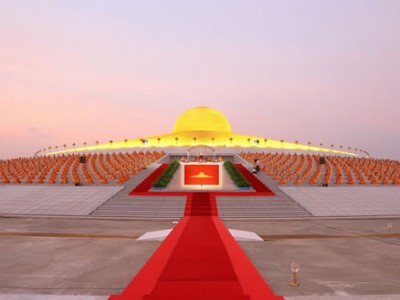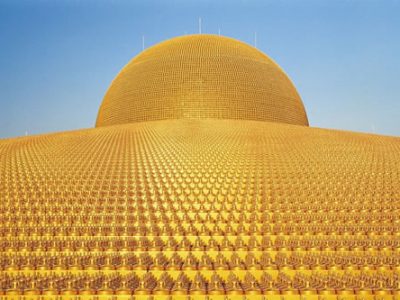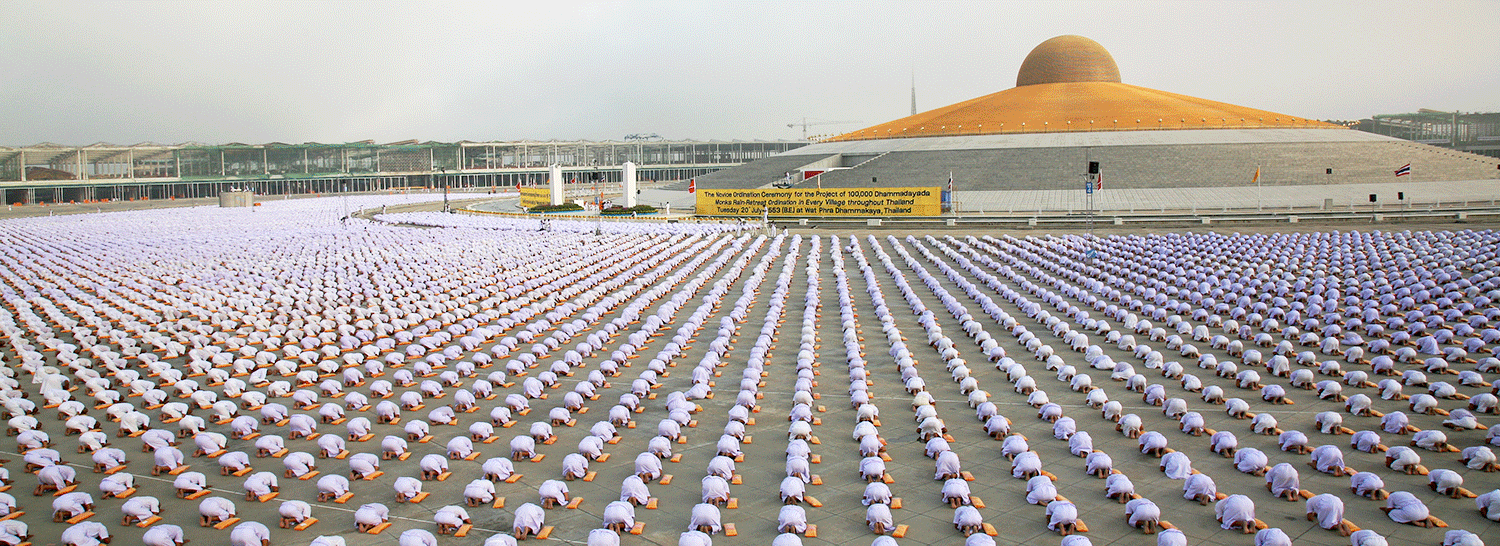FAQs
The Dhammakaya citiya is built correctly by the standards in Buddhism in every way. It is not a deviation from the traditions and the Buddha’s standards in any way. In Buddhism, there are 4 kinds of cetiya.
First, Relic Cetiya contains the relics of the Lord Buddha, or the remains of an enlightened monk. The Dhammakaya Cetiya contains the relics of the Lord Buddha
Second, Memorial Cetiya contains the necessities of the Lord Buddha or enlightened monks such as alms bowl, robes, and other necessary belongings. However, those items are rare and difficult to acquire in the modern age. The Dhammakaya Cetiya contains the necessities of modern monks, so that a thousand year from now people would see the way of life of monks in this era.
Third, Dhamma Cetiya contains the Tripitaka, or the Buddhist Scriptures. The Dhammakaya Cetiya contains the Tripitaka in several different languages, including CD-ROMs of the teachings in Buddhism today.
Fourth, Votive Cetiya contains the statue(s) of the Lord Buddha. The Dhammakaya Cetiya is covered with 300,000 Buddha statues.
In conclusion, the Dhammakaya Cetiya may be considered as all 4 kinds, and is not considered as a non-Buddhist cetiya in any way.
From the Great Tang Records (大唐西域记) on the Western Regions written by Phra Xuanzang (T51.873a2-13)*, when the Buddha first appointed the shape of all cetiyas, he folded his robes into a square shape and stacked them all together from largest to smallest. He then turned his alms bowl upside down over the folded robes, and said that that is the shape for a stupa-shaped cetiya. This shape has been the model for the building of cetiyas ever since.
Over time, artists started adding tiered umbrellas over top of the round top to show respect, which evolved into permanent structures top of the round top. Some examples are Phra Pathommachedi, Shwedagon Pagoda, or Tibetan cetiyas. Through time, the dome disappeared, leaving only the pointed top, which became the current style for most cetiyas today.
It is not surprising that the public finds the shape of the Dhammakaya Cetiya to be odd and resembles a sci-fi object. The evolution of the cetiyas’ shape have changed the way everyone perceive the “proper” shapes of cetiyas. However, the Dhammakaya Cetiya is the shape that it is to mirror the same traditional shape given to us by the Lord Buddha, and to symbolise the rising sun, spreading love and kindness, spreading peace to the whole world.
*To the north-west of the capital about 50 li or so we arrive at the town of Ti-wei; 40 li to the north of this town of Po-li. In each of these towns there is a stūpa about three chang (30 feet) in height. In old days when Buddha first attained enlightenment after advancing to the tree of knowledge, he went to the garden of deer;
At this time two householders meeting him, and beholding the brilliant appearance of his person, offered him from their store of provisions for their journey some cakes and honey. The Lord of the world, for their sakes preached concerning the happiness of men and Devās, and delivered to them, his very first disciples, the five rules of moral conduct and the ten good qualities.
When they had heard the sermon, they humbly asked for some object to worship. On this Tathāgata delivered to them some of his hair and nail-cuttings. Taking these, the merchants were about to return to their own country, when they asked of Buddha the right way of venerating these relics.
Tathagata forthwith spreading out his saṃghāti on the around as a square napkin, next laid down his Uttarāsaṅga and then his saṁkakṣikā; again over these he placed as a cover his begging-pot, on which he erected his mendicant’s staff. Thus he placed them in order, making thereby (the figure of) a stūpa.
The two men taking the order, each went to his own town, and then, according to the model which the holy one had prescribed, they prepared to build a monument, and thus was the very first stupa of the Buddhist religion erected.







